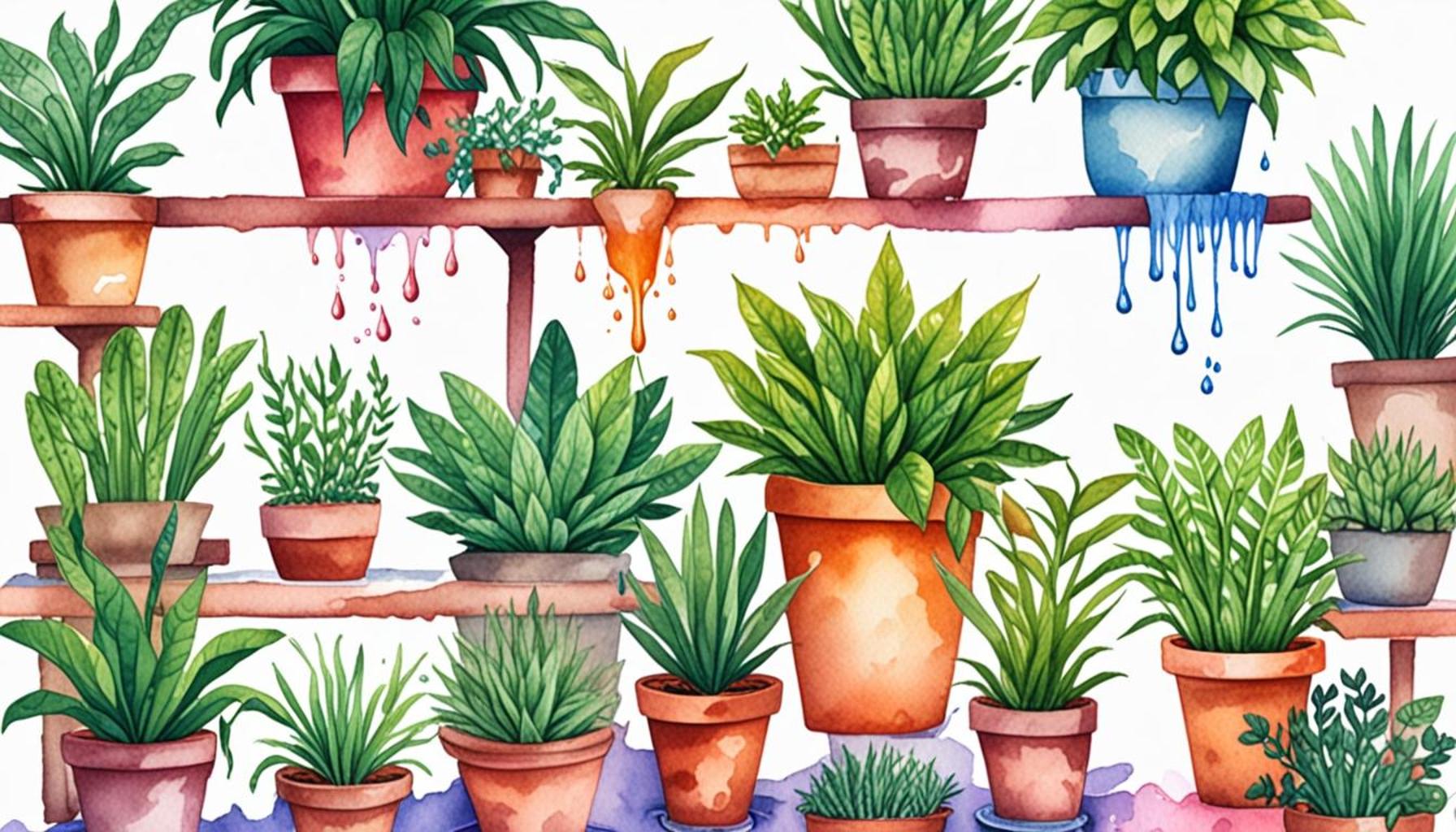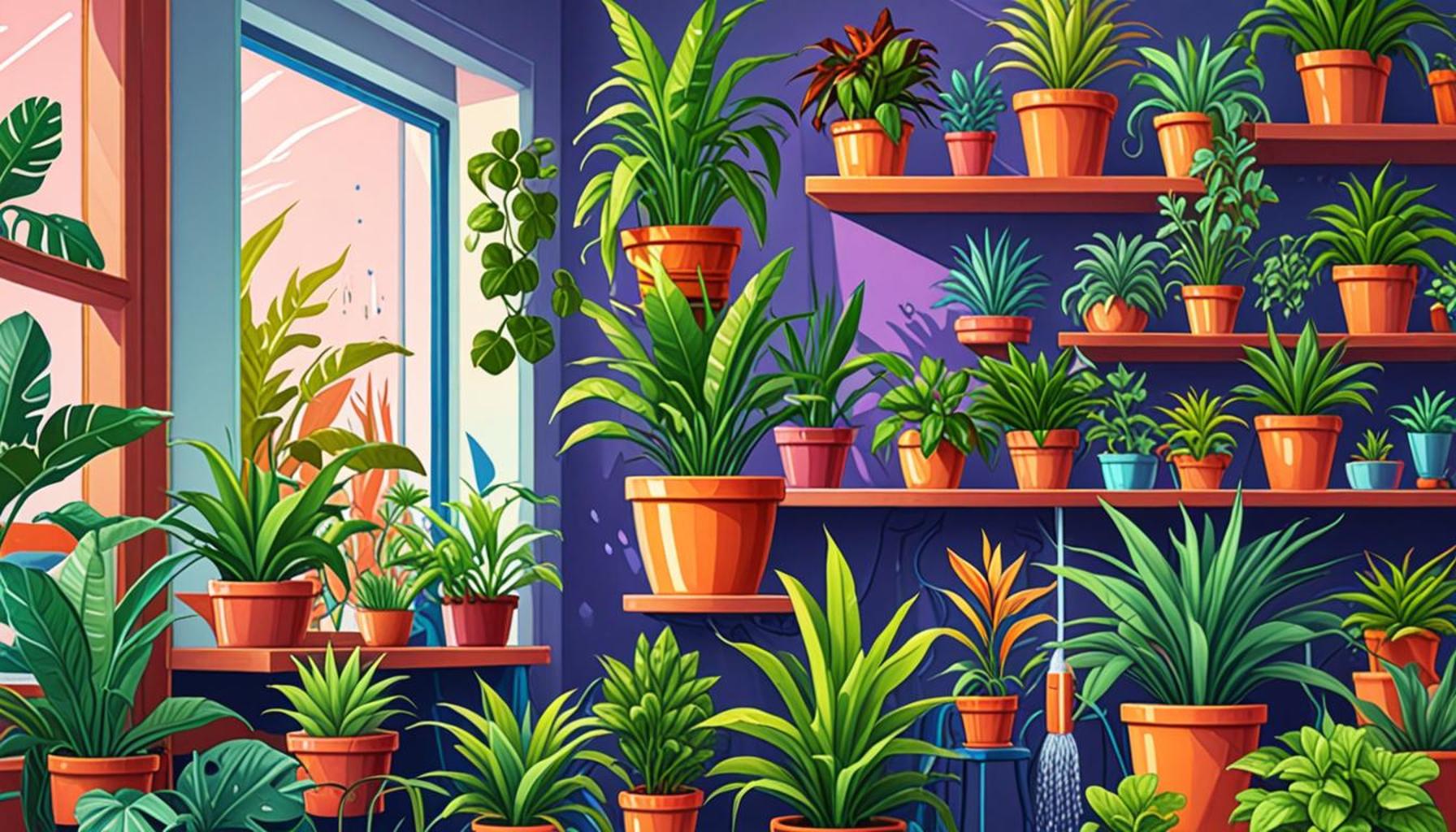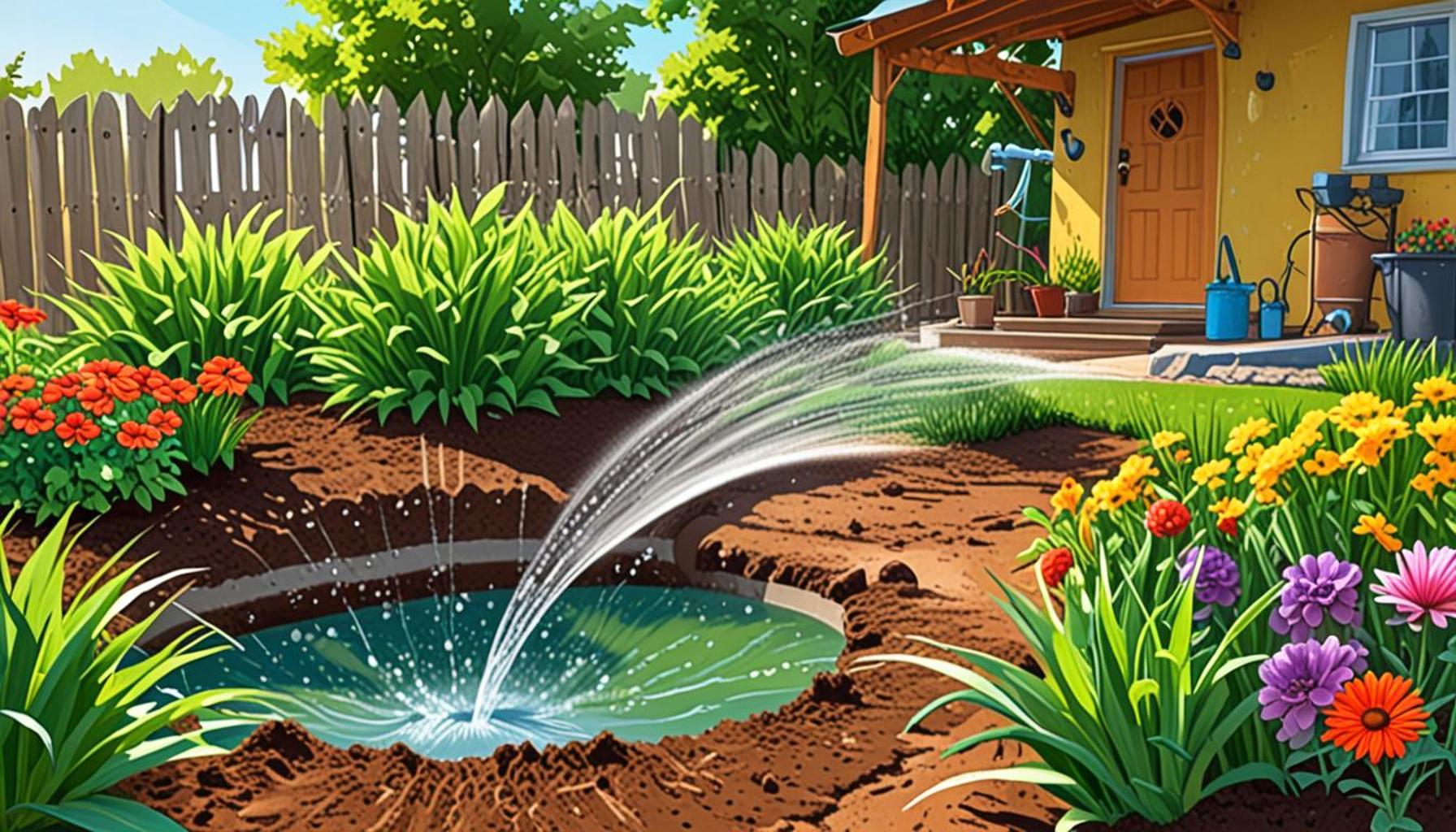The Importance of Water Quality in Home Gardening
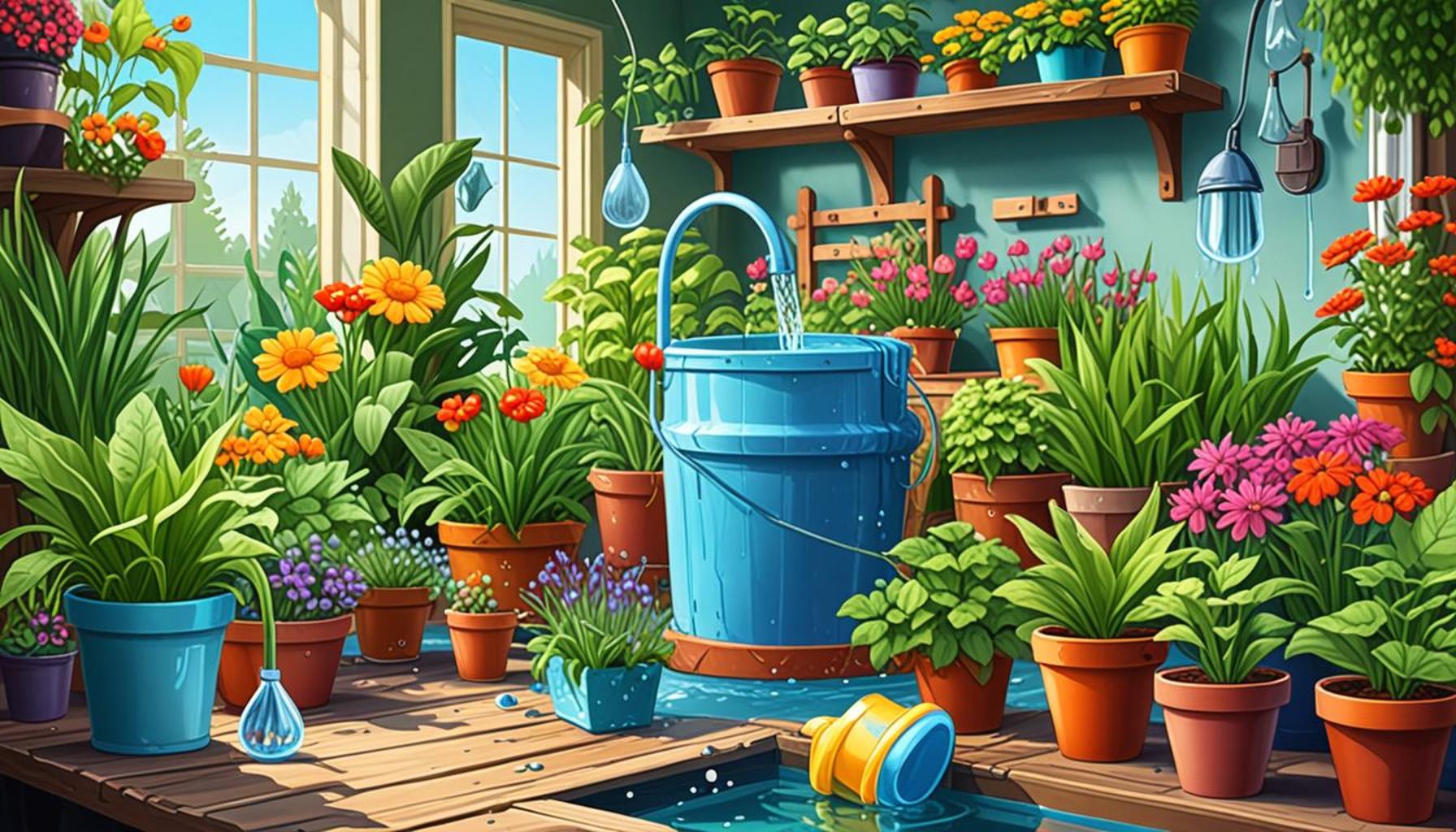
Exploring the Importance of Water Quality in Gardening
Water stands as the foundational element in gardening, essential not just for the immediate hydration of plants but also for influencing their overall health and productivity. The implications of using subpar water quality cannot be overstated – it can have a cascading effect on the soil, plant life, and even the ecosystem at large. In America, where home gardening has seen a resurgence, understanding how to optimize water quality is crucial for producing healthy, chemical-free produce.
Water quality is multifaceted, with various factors playing a role in its suitability for gardening. Among these, pH levels are pivotal. The ideal pH range for most garden plants falls between 6.0 and 7.5. When pH levels stray too far outside this range, plants may struggle to absorb essential nutrients, leading to poor growth. For example, a soil pH of 5.0 severely hinders the availability of phosphorus, a key nutrient for plant development.
Additionally, contaminants in water pose significant risks. Substances like pesticides or heavy metals—often the result of agricultural runoff or industrial pollution—can infiltrate household water supplies. A classic case in point is the contamination crisis in Flint, Michigan, which highlighted how lead in drinking water could adversely affect not only human health but also the soil and plants in home gardens. Research has shown that heavy metals can accumulate in edible plants, creating health risks for consumers.
Another common issue is the presence of chlorine, which is frequently used as a disinfectant in municipal water supplies. Although it is effective at killing harmful bacteria, chlorine can also be damaging to beneficial soil microorganisms that contribute to healthy soil structure and fertility. These microorganisms play a vital role in breaking down organic matter and enhancing nutrient availability, thus directly affecting plant growth.
Gardeners who overlook water quality may face various challenges, including stunted plant growth, decreased yields, and increased plant vulnerability to diseases. For instance, if plants are not absorbing adequate nutrients due to poor water quality, they may exhibit signs such as yellowing leaves or early wilting.
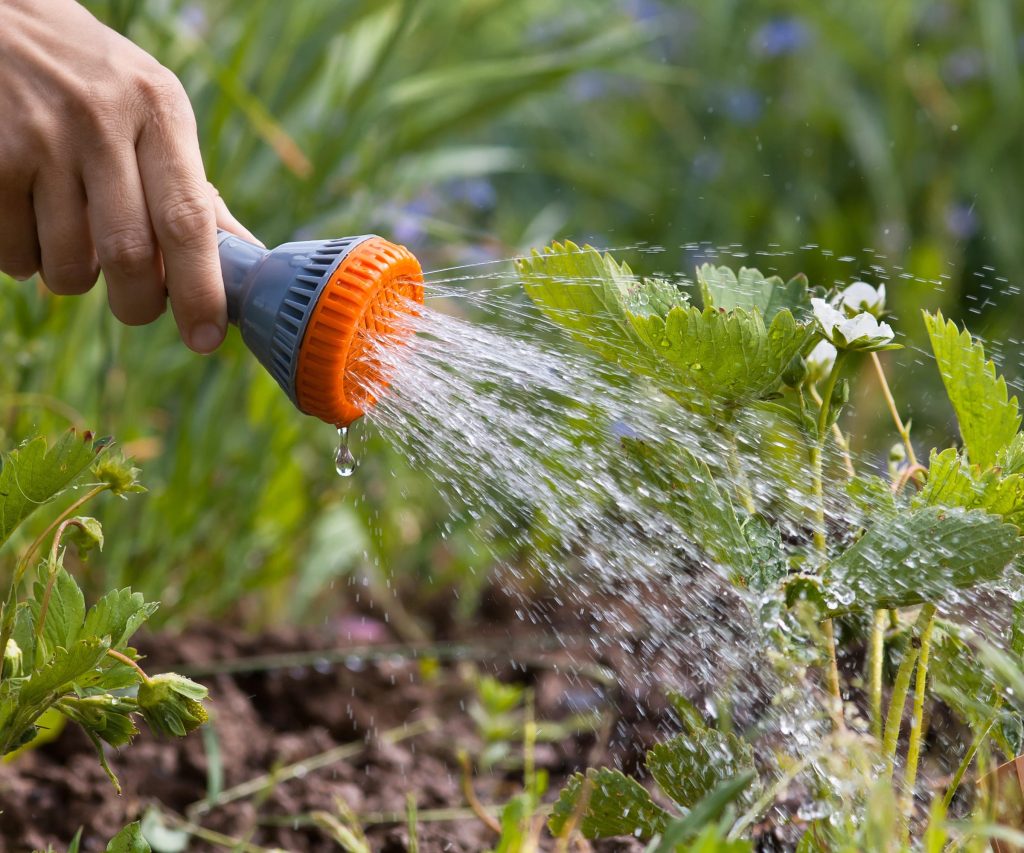
Fortunately, assessing and improving water quality need not be complicated. A simple water testing kit can help determine pH levels and identify contaminants. Home gardeners can also explore rainwater harvesting systems as a sustainable alternative, where rainwater is collected and stored—an effective way to avoid the drawbacks of tap water.
In summary, paying attention to water quality is paramount for any home gardener aiming for success. By investigating the makeup of your water and taking necessary steps to enhance its quality, you can foster a garden that not only thrives but also contributes positively to the local ecosystem. Your journey toward creating a flourishing garden starts with understanding the essential role that water quality plays.
DIVE DEEPER: Click here to learn about crop rotation in pest management
Understanding Water Quality Parameters
Water quality parameters influence more than just a plant’s thirst; they dictate its entire growth trajectory. Home gardeners need to familiarize themselves with the key elements that define water quality to cultivate a thriving garden. Below are some essential parameters to consider:
- pH Levels: As previously mentioned, pH plays a critical role in nutrient availability. Besides phosphorus, numerous other nutrients become less accessible at extreme pH levels. For example, iron, which is essential for photosynthesis, may become deficient if the pH exceeds 7.5. Regular monitoring of pH levels using simple testing kits can ensure plants are positioned to absorb key nutrients effectively.
- Electrical Conductivity (EC): This measures the water’s ability to conduct electricity, which directly correlates with its salinity levels. High salinity can lead to osmotic stress in plants, limiting their ability to take up water and nutrients. Ideal EC levels for gardening range from 0.5 to 2.0 mS/cm.
- Presence of Nutrients: While some nutrients are necessary for plant health, excess levels can also cause issues. For example, high nitrogen levels may induce excessive leafy growth at the expense of fruit and flower production. Conducting regular water tests can help address any imbalances in nutrient concentrations.
- Microbial Content: This refers to the presence of bacteria, fungi, and other microorganisms in the water. While beneficial microbes are essential for healthy soil and plant growth, pathogens can pose significant risks. Water sources contaminated with pathogens can introduce diseases to your garden.
Improving water quality can be as simple as adjusting your gardening practices. For instance, utilizing organic mulch not only preserves soil moisture but also minimizes any leaching of nutrients into the water system. Furthermore, if you’re sourcing your water from municipal supplies, it may be wise to inquire about water quality reports, which many local water boards provide. By recognizing the specific factors that affect water quality, homeowners can actively manage and enhance their water resources.
In addition to testing and monitoring, gardeners can leverage natural filtration methods, such as rain gardens. These systems allow rainwater to permeate through soil, where it can be naturally filtered before reaching plants. This approach not only improves water quality but also supports local groundwater systems, contributing to a healthier ecosystem.
Ultimately, understanding and maintaining the quality of the water used in home gardening is not merely a matter of agronomy; it’s a crucial step in building sustainable practices that protect human health and the environment. By actively managing water quality parameters, gardeners not only enhance their growth outcomes but also help to safeguard the wider ecological balance.
| Water Quality Aspects | Impact on Home Gardening |
|---|---|
| pH Levels | Influences nutrient availability, affecting plant growth and yield. |
| Contaminants | Toxic substances may lead to poor plant health and decreased longevity. |
| Mineral Content | Essential minerals contribute to stronger plant structures and impactful harvesting. |
| Microbial Life | Beneficial bacteria and fungi can enhance soil health and nutrient cycling. |
Ensuring high water quality is crucial for home gardening success. The pH levels in your water can greatly influence how well your plants absorb vital nutrients. If the water is too acidic or alkaline, some minerals become unavailable, stunting growth. Moreover, contaminants such as harmful bacteria or heavy metals pose a serious threat; they can not only injure your plants but also lead to unsafe food for consumption. Additionally, the right balance of essential minerals in water promotes robust plant development, enhancing both yields and flavors.Furthermore, the presence of beneficial microbial life in your water can empower your soil ecosystem, allowing for more efficient nutrient cycling and soil health. Utilizing high-quality water can set the foundation for a thriving home garden, cultivating not just plants but a sustainable growing experience. With attention to water quality, gardeners can witness improved resilience and health in their gardens, leading to fruitful harvests.
DON’T MISS: Click here for essential seasonal tips
Methods for Improving Water Quality in Home Gardening
With a firm grasp on water quality parameters, home gardeners can implement several practical methods to enhance the quality of the water they use. From natural filtration techniques to aeration methods, these strategies not only improve gardening outcomes but also create a sustainable system that can keep your plants healthy and flourishing.
- Rainwater Harvesting: Collecting rainwater is an eco-friendly way to ensure your garden receives high-quality water, free of chemicals often found in municipal sources. By installing rain barrels that capture rooftop runoff, gardeners can store this precious water for dry spells. Rainwater is typically soft and has a neutral pH, making it less likely to negatively affect the soil’s nutrient balance.
- Water Filtration Systems: For those relying on groundwater sources such as wells, investing in a multi-stage water filtration system can pay off significantly. These systems can effectively remove contaminants, improve taste, and enhance water clarity, ensuring that all plants receive the clean water they require. Reverse osmosis systems offer an extra layer of purification, making them an excellent choice for trickier contaminants.
- Using Compost Tea: Compost tea is a nutrient-rich liquid derived from steeping compost in water. Not only does it act as a fertilizer, but the microbial ecosystem it creates can improve overall water quality by introducing beneficial organisms to the soil. Spraying compost tea on plants can help enhance their resilience against pests and diseases, driving home the connection between water quality and plant health.
- Soil Health and Water Retention: Healthy soil supports healthy plants, and maintaining it can improve both the retention and quality of water in your garden. Practices like crop rotation, cover cropping, and the addition of organic matter can enrich soil structure, enabling it to better retain moisture and nutrients. As soil health improves, the water interacts with beneficial organisms, helping to filter out unwanted pathogens and contaminants.
Another fascinating aspect of water quality in home gardening is the use of aeration, which introduces oxygen into the water. This process can improve microbial activity in the soil and affect nutrient absorption. Aerated water is particularly beneficial in hydroponic gardening, where water’s quality is critical for plant development. Regular aeration reduces the risk of stagnation and encourages robust root systems by enhancing oxygen availability.
Furthermore, the timing of watering plays a pivotal role in water quality—early morning is often considered the ideal time. Watering in the morning helps minimize evaporation loss, allowing more of the water to reach the plant roots effectively. It also reduces the likelihood of fungal diseases that can spread in cool, moist conditions found in the evening. Additionally, including strategies like drip irrigation can significantly reduce water waste and enhance absorption, ensuring that the water quality remains high by minimizing nutrient leaching.
By implementing these diverse strategies, home gardeners can effectively improve the water quality they use, bolster plant health, and contribute to a more sustainable gardening practice. Emphasizing the importance of quality water serves to create flourishing gardens that not only meet the needs of plants but also support local ecosystems.
CHECK IT OUT: Click here for essential soil preparation tips
Conclusion
In summary, the importance of water quality in home gardening cannot be overstated. As gardening enthusiasts strive to cultivate thriving plants, they must first recognize that the foundation of their efforts lies in the water they provide. Quality water is essential not only for plant growth but also for enhancing the overall health of the ecosystem surrounding their gardens. By focusing on factors like chemical contaminants, pH balance, and beneficial microorganisms, gardeners can ensure their plants receive the optimal hydration they require for vigorous growth and resilience against pests and diseases.
Implementing innovative strategies, such as rainwater harvesting, advanced filtration systems, and enriching the soil through organic amendments further reinforces the connection between water quality and plant success. These methods contribute to a balanced, sustainable approach that aids in maintaining a healthy environment while preserving precious resources. The incorporation of practices like aeration and mindful timing of watering not only elevates water quality but also promotes efficiency in resource use—a critical component as we face increasing challenges related to water scarcity.
As we deepen our understanding of the intrinsic link between water quality and plant health, it becomes increasingly clear that taking proactive measures can lead to not only beautiful gardens but also a positive impact on our local landscapes and ecosystems. So, whether you’re an avid gardener or just starting out, prioritizing water quality in your home gardening endeavors is a step towards cultivating not only your plants but also a more sustainable future. Together, let’s explore how the quality of water we choose has the power to transform our gardening experience and contribute to a healthier planet.

